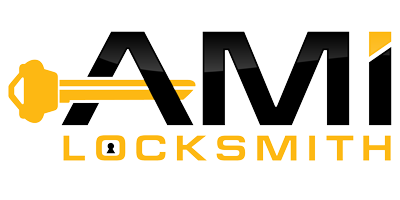The Worst Spare Key Hiding Spots
Why You Should Never Leave Spare Keys In These Places
There’s a comforting sense of control in knowing you have a spare key tucked away somewhere “discreet.” The idea is simple: if you lose your main set, you’re not stranded. But what many people don’t realize is that burglars, opportunists, and even curious passersby often know exactly where to look. Over time, patterns emerge—certain hiding places have been used so often that they’re practically clichés. Whether it’s at a house, an apartment, an office, or even somewhere unexpected like a boat, these spots can attract attention for all the wrong reasons. Criminals don’t rely on luck; they rely on predictability. And unfortunately, some of the most common hiding places are also the most predictable.
The problem isn’t just familiarity—it’s that many spots can be checked quickly without raising suspicion. A thief doesn’t need to ransack the property to find your spare; they can do a casual walk-by and know exactly where to look. The moment you choose a hiding place that feels “obvious” to you, it probably feels just as obvious to someone else.
Why Common Hiding Places Fail
Let’s start with the home. Many spare keys end up in spots that make perfect sense for the person hiding them—under a doormat, inside a flowerpot, tucked under the lip of a porch step. The problem is that these areas are quick and easy to check. Even if your doormat blends in with the porch, it takes one swift motion for someone to flip it over. Likewise, a decorative planter right by the front door isn’t as “inconspicuous” as it seems; in fact, thieves often check there first.
Apartments have their own set of risks. Some residents slide a key above the door frame or behind a light fixture in the hallway, thinking it blends with the surroundings. But shared hallways mean shared access, and strangers coming and going throughout the day can spot a hiding pattern quickly. It’s also worth remembering that multi-unit buildings may have maintenance or delivery workers passing through, and not all of them are strangers to the idea of a “classic” key stash.
Cars can be just as vulnerable. Leaving a spare in the glove compartment, tucked under a floor mat, or even magnetized under the frame of the vehicle has been a habit for decades. The problem? Those habits are widely known. If someone gains access to your vehicle—whether it’s parked at home, at work, or at a marina—they might also gain access to your home or office if the key inside matches those locks.
Even offices and commercial spaces are prone to these oversights. A spare key in a desk drawer, under a keyboard, or inside a filing cabinet might feel discreet in a busy workspace, but anyone who spends a little time there could stumble across it. And in places like marinas or boat storage areas, keys stashed under seat cushions or in obvious compartments can be an open invitation to the wrong kind of attention.
The Risk Of Predictable Patterns
The core issue isn’t just the hiding spot—it’s the pattern it represents. People tend to choose locations that feel convenient, close to the lock they operate, and easy to remember. This convenience is exactly what makes them predictable. If you’ve ever thought, “I need it somewhere I can grab quickly,” you’ve already narrowed the list down to the same handful of places countless others have chosen before you.
For someone with bad intentions, this predictability is like a roadmap. Criminals learn these patterns through experience, through shared stories, and sometimes through trial and error. They might check under mats, in mailboxes, behind utility boxes, or under loose siding panels. The search doesn’t take long, and if they find a key, they can gain entry without leaving visible signs of forced entry—meaning you might not even realize someone’s been inside until much later.
Another subtle risk is seasonal visibility. Imagine hiding a key under a loose stone in the garden during the summer, thinking it blends perfectly. Come winter, with leaves gone and snow covering the ground, the spot becomes more obvious, or the covering shifts, leaving the key partially visible. This kind of unintentional exposure can happen in any environment, from a suburban yard to a shared marina dock.
Thinking Beyond The Obvious
Avoiding these pitfalls starts with rethinking what “hidden” means. A good hiding place isn’t just about blending in—it’s about breaking expectations. Instead of proximity, consider separation; instead of convenience, think creativity. This doesn’t necessarily mean creating elaborate puzzles or buying specialized lockboxes, but it does mean moving away from locations that fit a predictable template.
For instance, rather than placing a key right by the front entrance, think about areas that are inconvenient for a stranger to search but still accessible to you. The same goes for vehicles—if a key must be stored nearby, it shouldn’t be somewhere a casual intruder could check in seconds. In commercial spaces, spare keys should be in locations that require more than just wandering around to discover, and ideally should be stored with some form of controlled access.
Boats, RVs, and other recreational vehicles are particularly vulnerable because they often sit unattended for long stretches. Keys tucked into obvious compartments or storage bins might not be there when you return. It’s worth considering that environments with low foot traffic for owners often have higher appeal for intruders—they have more time to search without risk of interruption.
The key takeaway is that predictability is the enemy of discretion. By challenging your own assumptions about where a spare “should” go, you reduce the chance of it being found by the wrong person.
Relying on a hidden spare key as your only backup can create a false sense of security. The reality is that many hiding spots are well known to those who would misuse them, whether at home, in a shared apartment building, at the office, or even on a boat. That’s why it’s worth taking the time to think strategically about storage and access. Creative thinking, combined with more secure alternatives, can significantly lower your risk.
At Ami Locksmith, we help people protect their property by offering solutions that go far beyond the predictable. If you’re unsure whether your spare key strategy is putting you at risk, we can provide guidance and alternatives that work for your lifestyle, location, and specific needs.
Contact us today and let’s talk about ways to keep your access in your hands—and out of anyone else’s.


